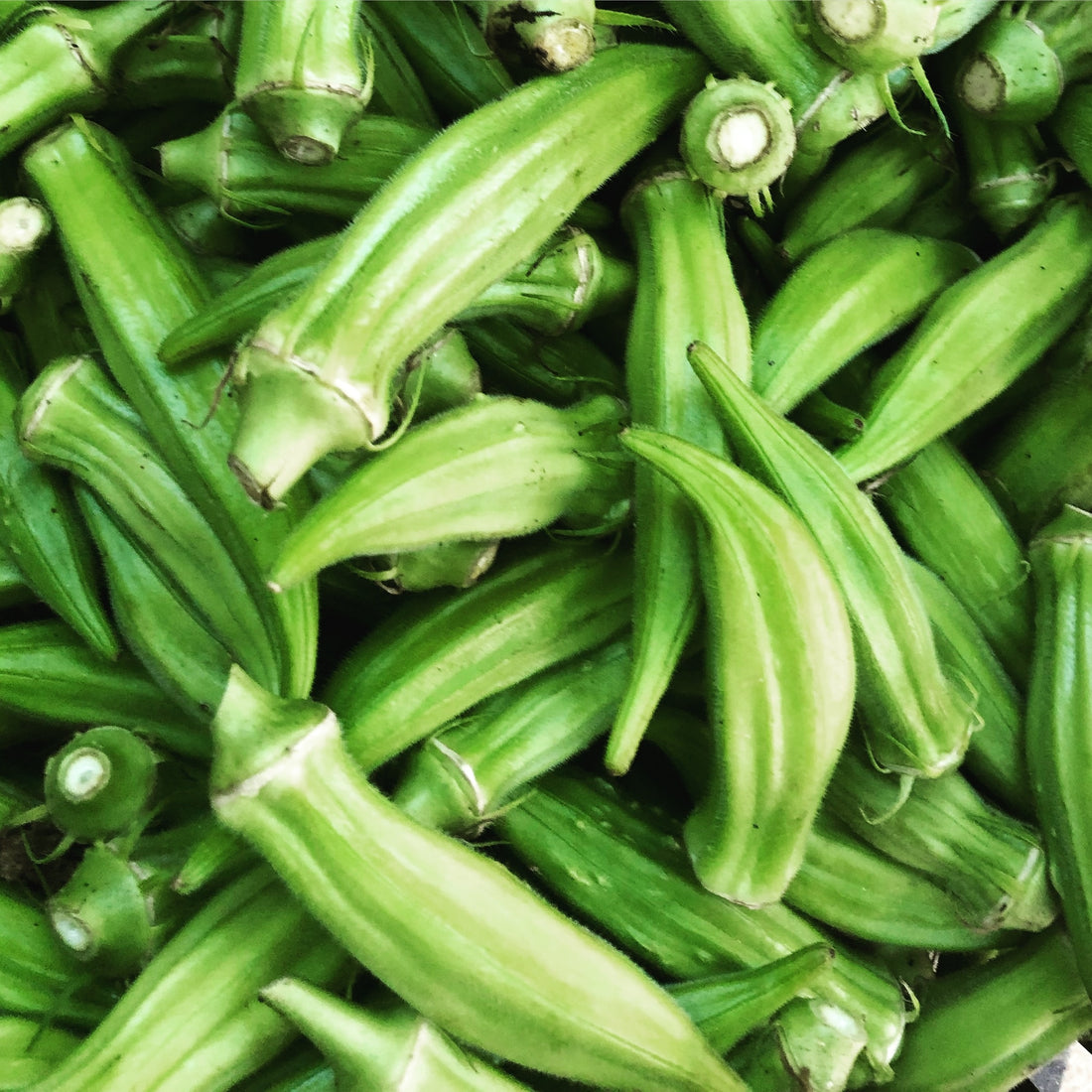Primarily considered a “Southern Crop”, this Asian native is one of the most versatile vegetables in the garden and can be eaten pickled, sautéed, steamed, fried, or in soups, gumbos, or stir-fries. A relatively fast grower, Okra is ready for harvest after 50-60 days of 70 degrees or warmer. While not a staple crop in Utah, it has recently grown in popularity.
SOIL PREPARATION
Okra prefers a sandy, well drained soil, that is not too heavy. They also need full sun exposure and high temperatures. Before planting, incorporate 2-3 inches of well composted organic matter and 1-2 lbs of all-purpose fertilizer (we recommend “That’s All it Takes” complete fertilizer) per 100 square feet and work them into the soil to a depth of 4-6 inches. For container planting, incorporate the fertilizer through the first 4 inches and add a slow release fertilizer like Garden Code 6 on top of the soil after planting. If you have heavy, clay soils, we recommend 4-6 inches of organic matter and 50 lbs of Utelite or Zeolite per 200 square feet added to the soil each fall for multiple years to increase drainage and nutrient availability. Over time, you can create a better growing environment for your garden plants to thrive in and produce. Please see our information sheet “Preparing your Soil” for more detailed info on soil preparation before planting a garden
PLANTING
Okra grows best from seed and can be sown directly outside anytime after the risk of frost has passed and when soil temperatures are around 70 degrees, so the best time to plant in Cache Valley is in mid to late May. Soaking the seeds 24 hours in advance can help increase germination success. Plant seeds about 1/4-1/2 inch deep and 12-18” apart and cover with a light mulch or potting soil to prevent soil crusting and to help retain moisture. Try to maintain uniform soil moisture for 7-10 days or until the seeds begin to emerge. Keep 2-4 feet between rows, as the spines on the plant and seed pods can be irritating to the skin if they come in prolonged contact.
VARIETIES
Because Okra is a warm-climate vegetable Anderson’s offers the short-season Clemson Spineless. It is a heavy producer that does well in our valley.
WATER
Okra needs regular watering and consistent soil moisture, but soil should dry completely between waterings to produce well. Use of a soaker hose and light mulches can assist in maintaining correct soil moisture and guaranteeing a healthy harvest. We recommend about 1-2 inches of water applied per week in 2-3 applications.
FERTILIZER
Fertilize with a balanced vegetable food (“That’s All it Takes” or Happy Frog Organic Tomato & Vegetable Food) down the side of the row of plants after the first pods have set. 1-2 cups per 10 feet of row works well. We also recommend treating your seed or plants with beneficial microbes and mycorrhizae (Kangaroots or Myke). These added helpers bring nutrients and water directly to the plants that host them, making them stronger, more resistant to insects and diseases, and more drought tolerant.
COMMON PROBLEMS
Aphids, spider mites, and nematodes are all frequent pests on Okra. Corn Earworm is occasionally seen. Several safe and effective chemical and organic controls are available to stop these pests before they start - Ferti-lome Spinosad spray is an excellent organic choice, and Ferti-lome Broad Spectrum Insecticide works quickly and safely to stop a wide variety of insects.
HARVESTING
Pods are ready to harvest 3-4 days after flowering, and have their best flavor and texture when they are 2-4 inches long. Harvest every 2 days to promote continued growth; Okra will stop producing if pods are not harvested.

